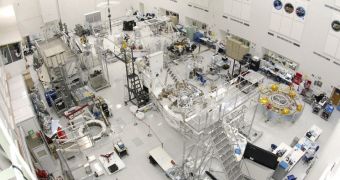The United States' space program would have looked entirely different had it not been for the NASA Jet Propulsion Laboratory (JPL) and its Spacecraft Assembly Facility (SAF). Located in Pasadena, California, the lab has been constructing and managing spacecraft for 50 years.
The SAF itself was constructed back in 1961, as NASA wanted to provide support for the Ranger and Mariner missions. These spacecraft were heading towards Venus, Mars and the Moon, and they were being built just three years after the US entered the Space Age (with the JPL-built Explorer 1).
Originally, the JPL Building 179 (the other name SAF is known by) was a simple high bay, that also had some of the lowest cleanliness standards in the industry. Spacecraft today are constructed in sterile clean rooms, but back in the day workers were allowed to smoke inside the assembly facility.
Now named High Bay 1, the original chamber is 24 by 36 meters (80 by 120 feet), and is home to teams constructing a wide variety of space exploration missions. The most important science space probes ever deployed into the solar system were built by, and are managed from, the JPL.
Some of the personnel that has been at the JPL for decades recalls that as many as five different spacecraft used to be built in the High Bay 1 at times during the 1960s. At that time, numerous missions were launch all over the solar system.
“After the original construction of the high bay, the System Test Complex on the south side of the high bay's windows was added. A second high bay, about 70 feet by 70 feet was finished in 1976 to support the Voyager Project,” experts at the JPL say in a press release marking the anniversary.
“Spacecraft assembled in High Bay 2 have included Voyager 1 and 2, Galileo and Cassini,” they add.
At this point, High Bay 1 houses the team building the NASA Mars Science Laboratory (MSL) rover Curiosity. In the past, the same building housed the Mars Exploration Rovers Spirit and Opportunity.
“Personnel working in the high bay wear protective clothing to minimize particles and bacteria reaching the spacecraft and the facility,” the JPL team explains.
“All the equipment that enters the high bay is cleaned first with approved solvents. Both high bays are equipped with continuous remote monitoring for environmental conditions and cleanliness levels to ensure system safety and quick response to anomalous conditions,” they add.
The walls of the High Bay 1 are a testimony to the vast number of missions the JPL was involved in. They “represent all the missions (spacecraft and instruments) that were assembled in the Spacecraft Assembly Facility, regardless of which high bay was used,” the JPL release reads.
“These include the first successful missions to Venus, Mars, Jupiter, Saturn, Uranus and Neptune, as well as Earth's moon. The facility has also built Earth-science instruments, plus Wide Field and Planetary Cameras that flew on the Hubble Space Telescope,” it concludes.

 14 DAY TRIAL //
14 DAY TRIAL //